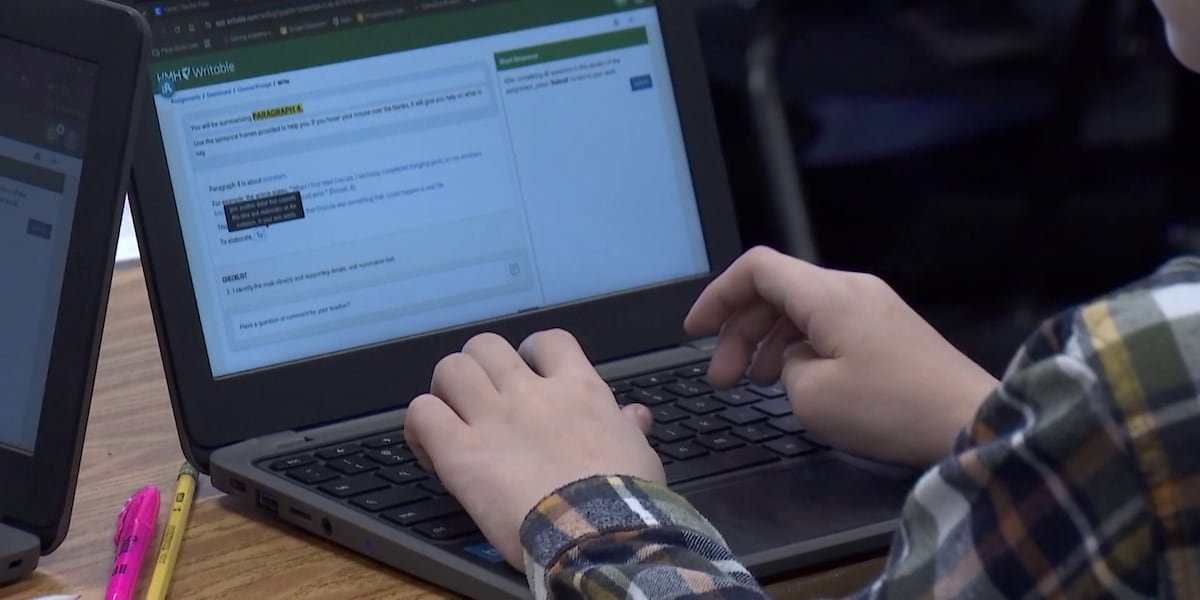AI Insights
New study shows how AI is reshaping the telco value chain

The IBM Institute for Business Value study shows that generative AI is live in customer care for 69% of telecoms. Meanwhile, agentic AI—capable of autonomous decision-making—is being used by 44% of CSPs. These technologies are enabling real-time insights, personalized experiences and operational efficiency across the board.
Momentum is building in areas such as network automation, edge intelligence and service assurance, but leading CSPs are already pushing further.
For example, Bharti Airtel, a leading CSP in India, has deployed an AI-powered anti-SPAM network that flags over 8 billion spam calls and 1 billion spam SMS messages. It identifies nearly 1 million spammers daily. The company also launched an AI-driven RAN energy management solution, expected to save USD 12 million annually while reducing its carbon footprint.
Meanwhile, China Mobile has introduced over 24 AI products. One of them, Lingxi—an intelligent customer assistant—handles 90% of first-line inquiries and has boosted customer satisfaction by 10% in pilot regions. The company also uses AI-powered predictive analytics to reduce network repair times by 30% and AI-based energy management to dynamically optimize power usage across its RAN infrastructure.
As AI becomes embedded in critical infrastructure, telecom providers are turning to performance dashboards to bring transparency and accountability to AI-driven initiatives. These tools help shift AI from a black box to a visible engine for business value—tracking model drift, triggering retraining and alerting teams when KPIs fall below thresholds. Governance dashboards also support regulatory compliance by offering transparency logs for audit purposes.
To ensure sustained impact, continuous monitoring and agile feedback loops are essential. But measuring the right things matters equally. Focusing solely on cost can obscure gains in customer experience or business growth.
That insight is why leading telecom adopters track a balanced set of KPIs—most often cost savings, customer satisfaction, AI-driven revenue growth and operating margin. Over the past year, CSPs have reported real, measurable improvements across these high-priority performance areas.
By anchoring AI initiatives in business outcomes and operational KPIs, CSPs can ensure that innovation translates into growth, efficiency and long-term competitive advantage.
AI Insights
AI use is expanding in Las Vegas Valley classrooms, officials say

LAS VEGAS (FOX5) — As the use of artificial intelligence grows globally, it is also expanding within Clark County School District classrooms, officials say.
In the last few years, the district has embedded several AI tools into its curriculum, officials said. FOX5 got an inside look at one example at Faiss Middle School near Fort Apache and Warm Springs roads in southwest Las Vegas.
“If you had an actual assistant in your classroom, how would you utilize that assistant?” asked Karen DelCasino, an eighth-grade teacher at the school. “AI is just kind of that assistant.”
DelCasino, who has taught at the school for 19 years, demonstrated the use of an AI program called Writable in her classroom. She said the AI program operates on students’ Chromebooks, allows them to submit assignments, and provides feedback to her in real time.
“It used to take hours to grade paragraphs, to grade essays,” DelCasino said. “It’s a lot more efficient than it used to be on pen and paper.”
DelCasino said she reviews the feedback before sharing it with students.
“I might make revisions on how it’s scored because, as a teacher, I know exactly what I’m looking for; AI only knows so much,” she said.
Rachel Solem, director of the Clark County School District’s Literacy and Language Development Department, said Writable is one of several programs available to schools in the district.
“AI is not going away, right?” Solem said. “We want to make sure our students know how to use that, but use it responsibly.”
Solem said the school district has developed a “safe list” of programs allowed in classrooms, meaning they have an agreement with the district to ensure student data is protected.
Student safety is also top of mind for the Nevada Department of Education, according to Emily Bleyle, the department’s education programs professional for computer science.
“Always a huge concern is security, privacy of student data,” Bleyle said. “It’s a closed-loop system, where it’s not being used to train the models.”
She said an AI task force developed an ethics statement to guide AI use in schools statewide, adding that they hope AI can help teachers with administrative work so they can spend more time connecting with students.
Copyright 2025 KVVU. All rights reserved.
AI Insights
Children are asking AI for advice on sex and mental health, new report finds

With AI regulation still up in the air, a new report reveals concerning trends in how children interact with artificial intelligence — and they’re not just using it for homework help.
The study shows some children and teens are turning to AI chatbots for conversations about sensitive topics like sex. The report also finds they spend more time chatting online with AI than texting their friends.
Experts warn that some kids may be confusing chatbots with actual human relationships.
Children having longer conversations with AI than friends
As the use of artificial intelligence continues to spread, a growing number of children are turning to it for companionship.
Those are the findings in the new report from the company Aura, which provides digital protection services. They found some children are having conversations with AI chatbots that are 10 times longer than the texts they send their friends.
Among Aura’s findings, the company found messages to GenAI companion apps averaged 163 words per message. The typical iMessage is just 12 words.
“We have kids eight, 10 years old that we’re seeing in our data that are using these platforms,” said Aura’s chief medical officer Dr. Scott Kollins.
In analyzing how kids are using the tech, Aura found AI interactions ranging from homework and mental health themes to shared personal information and even sexual and romantic roleplaying.
“The concern that raises for me as a psychologist, but also as a parent, is that it’s clearly serving some purpose for the kids from a social interaction perspective,” Kollins said. “But if that becomes a substitute for learning how to interact and engage in real life, that presents some big unknowns and potential problems for kids’ development.”
Experts warn of developmental risks
Experts say those potential problems can arise because children lack the emotional maturity to understand interactions with AI.
Link to Dr. Joanna: https://www.healthychildren.org/English/family-life/Media/Pages/are-ai-chatbots-safe-for-kids.aspx
“The thing about children is they have more magical thinking than adults, so they can really attach to an AI chatbot and think that it’s human,” Dr. Joanna Parga-Belinkie said.
Parga-Belinkie is a pediatrician and neonatologist. She’s not involved in Aura’s research but says chatbots can be risky for young users.
“AI will feed a user information it thinks that user wants to hear,” she explained, “and there are just not a lot of safeguards in place to stop AI from telling children, false, harmful, over-sexualized, or even violent things.”
Parents urged to set boundaries
Experts say it’s important for parents to take steps to talk to their children about safe and appropriate uses for AI.
Kollins points out that while many people are familiar with ChatGPT and a few other popular AI chatbots, in reality there are hundreds of AI tools out there. He says parents need to make sure they know which apps their child is downloading so they can set appropriate boundaries.
RELATED STORY | Anthropic will pay out $1.5B to settle allegations of book piracy, used to train its AI
Uncertainty over AI policy
There are organizations like the nonprofit Common Sense Media pushing for a ban of Meta’s AI chatbot for kids under the age of 18.
This month, First Lady Melania Trump called on private and public sectors to prepare children for the growth of AI.
For now, uncertainty remains for AI policies geared toward children. Experts advise parents to monitor their children’s phones, ask questions, and talk about the dangers of sharing personal information.
This story was reported on-air by a journalist and has been converted to this platform with the assistance of AI. Our editorial team verifies all reporting on all platforms for fairness and accuracy.
AI Insights
Sevierville uses new artificial intelligence system to fix potholes, rate roadways – WBIR
-

 Business2 weeks ago
Business2 weeks agoThe Guardian view on Trump and the Fed: independence is no substitute for accountability | Editorial
-
Tools & Platforms4 weeks ago
Building Trust in Military AI Starts with Opening the Black Box – War on the Rocks
-

 Ethics & Policy1 month ago
Ethics & Policy1 month agoSDAIA Supports Saudi Arabia’s Leadership in Shaping Global AI Ethics, Policy, and Research – وكالة الأنباء السعودية
-

 Events & Conferences4 months ago
Events & Conferences4 months agoJourney to 1000 models: Scaling Instagram’s recommendation system
-

 Jobs & Careers2 months ago
Jobs & Careers2 months agoMumbai-based Perplexity Alternative Has 60k+ Users Without Funding
-

 Podcasts & Talks2 months ago
Podcasts & Talks2 months agoHappy 4th of July! 🎆 Made with Veo 3 in Gemini
-

 Education2 months ago
Education2 months agoMacron says UK and France have duty to tackle illegal migration ‘with humanity, solidarity and firmness’ – UK politics live | Politics
-

 Education2 months ago
Education2 months agoVEX Robotics launches AI-powered classroom robotics system
-

 Funding & Business2 months ago
Funding & Business2 months agoKayak and Expedia race to build AI travel agents that turn social posts into itineraries
-

 Podcasts & Talks2 months ago
Podcasts & Talks2 months agoOpenAI 🤝 @teamganassi




















